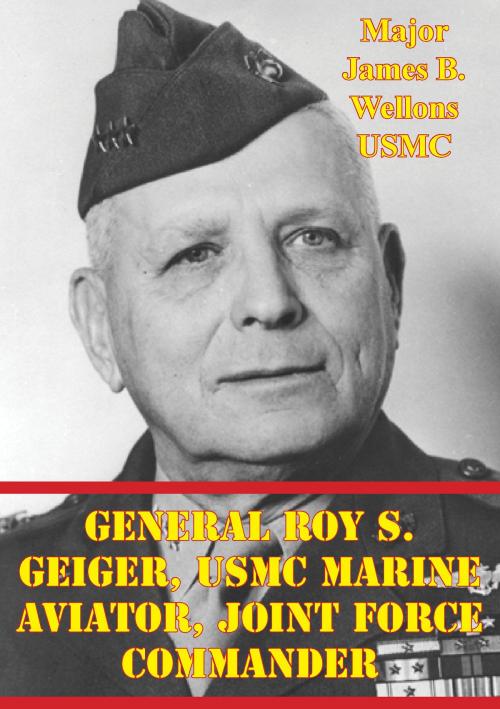General Roy S. Geiger, USMC Marine Aviator, Joint Force Commander
Nonfiction, History, Germany, European General, Military, United States| Author: | Major James B. Wellons USMC | ISBN: | 9781786250896 |
| Publisher: | Tannenberg Publishing | Publication: | November 6, 2015 |
| Imprint: | Tannenberg Publishing | Language: | English |
| Author: | Major James B. Wellons USMC |
| ISBN: | 9781786250896 |
| Publisher: | Tannenberg Publishing |
| Publication: | November 6, 2015 |
| Imprint: | Tannenberg Publishing |
| Language: | English |
This work comprises an effort to answer the question of how an airman can be qualified to be a Joint Force Commander, using the biographical example of General Roy S. Geiger, USMC. Geiger was the fifth designated Marine Aviator, earning his wings in June of 1917. He then served as a squadron commander in the First Marine Aviation Force in World War I (WW I), where he flew combat sorties and earned his first Navy Cross. In the interwar years, he served in multiple command billets, acted as head of Marine Aviation, and performed with distinction as a student at the Army Command and General Staff School and the Army and Navy War Colleges. During World War II, Geiger commanded the First Marine Aircraft Wing and the CACTUS Air Force in the dark days of the Guadalcanal Campaign in 1942, where at age fifty-seven he again flew in combat, earning his second Navy Cross. He went on to serve as an Amphibious Corps Commander in the Pacific Theater, where he led campaigns at Bougainville, Guam, and Peleliu. Finally, he distinguished himself in the battle of Okinawa as the only Marine ever to command a field Army, the Tenth Army. After World War II, Lieutenant General Geiger continued to shape the Marine Corps in command of Fleet Marine Forces, Pacific until his premature death in 1947. The study is a chronological account of the life of Roy Geiger, with a focus on his leadership traits, extensive professional military education, remarkable joint relationships, and innovation, all of which contributed to his success as a Joint Force Commander. The author argues that Geiger was the most influential Marine aviator and among the most successful operational commanders in the history of the United States Marine Corps. Roy Geiger was the prototype for a Joint Force Commander.
This work comprises an effort to answer the question of how an airman can be qualified to be a Joint Force Commander, using the biographical example of General Roy S. Geiger, USMC. Geiger was the fifth designated Marine Aviator, earning his wings in June of 1917. He then served as a squadron commander in the First Marine Aviation Force in World War I (WW I), where he flew combat sorties and earned his first Navy Cross. In the interwar years, he served in multiple command billets, acted as head of Marine Aviation, and performed with distinction as a student at the Army Command and General Staff School and the Army and Navy War Colleges. During World War II, Geiger commanded the First Marine Aircraft Wing and the CACTUS Air Force in the dark days of the Guadalcanal Campaign in 1942, where at age fifty-seven he again flew in combat, earning his second Navy Cross. He went on to serve as an Amphibious Corps Commander in the Pacific Theater, where he led campaigns at Bougainville, Guam, and Peleliu. Finally, he distinguished himself in the battle of Okinawa as the only Marine ever to command a field Army, the Tenth Army. After World War II, Lieutenant General Geiger continued to shape the Marine Corps in command of Fleet Marine Forces, Pacific until his premature death in 1947. The study is a chronological account of the life of Roy Geiger, with a focus on his leadership traits, extensive professional military education, remarkable joint relationships, and innovation, all of which contributed to his success as a Joint Force Commander. The author argues that Geiger was the most influential Marine aviator and among the most successful operational commanders in the history of the United States Marine Corps. Roy Geiger was the prototype for a Joint Force Commander.





![Cover of the book U.S. Marines In Battle: Al-Qaim, September 2005-March 2006 [Illustrated Edition] by Major James B. Wellons USMC](https://www.kuoky.com/images/2014/august/300x300/9781782896838-V3md_300x.jpg)









